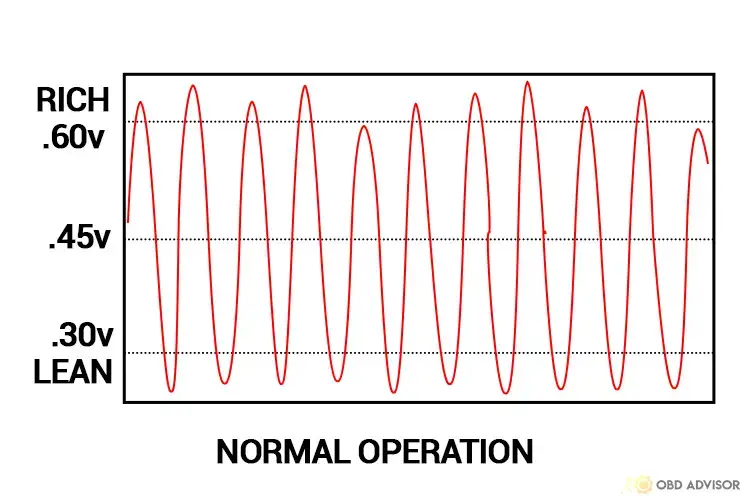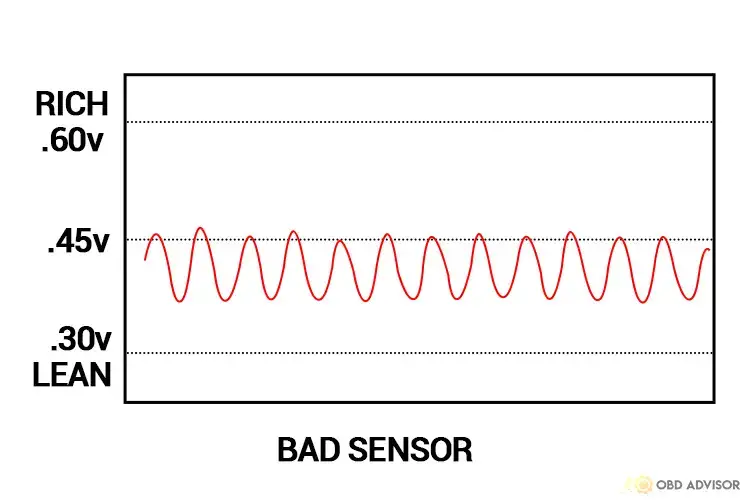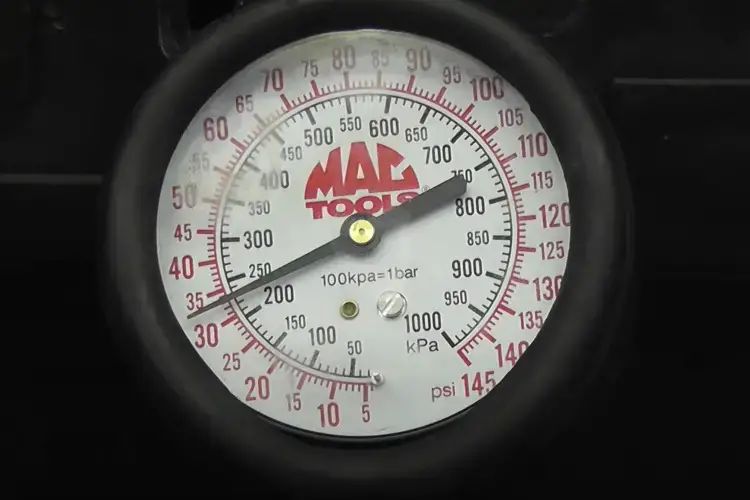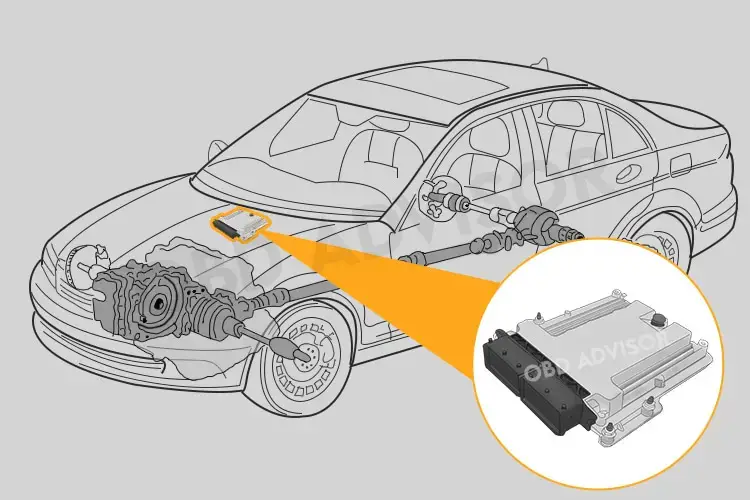P0171: System Too Lean (Bank 1)
The P0171 code generally tells you too much air is getting into your engine. While this fault code isn’t severe on its own, it can lead to further damage that is more serious.
Let’s take a quick look at a brief of the P0171 code below.
- P0171 Definition: System Too Lean (Bank 1)
- Code type: Generic – P0171 indicates the same problem whether you’re having a Chevy, Ford, or Toyota, etc.
- Can I drive with the P0171 code? Yes, but you should not drive your vehicle for a long time.
- Is it easy to fix? Intermediate level.
- Cost: $10 – $200 (common)
To help you fully understand the P0171 code and find the right fix, I divided the article into 4 parts.
Click on the images below to jump right into it!
What Does The P0171 Code Mean?
Diagnostic trouble code (DTC) P0171 stands for “System Too Lean” (Bank 1). The air-fuel mixture with too much air and little gasoline could trigger this trouble code.
Lean Mixture = Too much air, not enough fuel
Further Explanation
In normal conditions, the combustion engine operates effectively with an air-fuel ratio of 14.7:1. Specifically, every 14.7 grams of air combines with 1 gram of fuel.
In case Bank 1 receives too much air or/and too little fuel, the engine would be running lean. A vacuum leak or faulty fuel system can be the problem for this.

P0171 Causes Identification: Quick View
Usually, your scan tool throws P0171 with other codes.
This could be a bit challenging to determine the cause. So, I compiled this table to make it easier for you to diagnose the problems and fix them.
| Codes Combination | Causes | Solutions |
|---|---|---|
| P0171 + P0174 (+P0106) | Loose or faulty gas cap. Vacuum leak. | Tighten or replace the gas cap. Fix the vacuum leak. |
| P0171 + P0130 to P0135 (+P0300) | Lazy upstream oxygen sensor. | Replace the oxygen sensor. |
| P0171 + P0100 to P0104 | Faulty MAF/MAP sensor. | Clean or replace the MAF/MAP sensor. |
| P0171 + P0174 (+P0087/P0089) | Bad fuel pressure regulator. Bad fuel pump. Clogged fuel filter. Leak fuel line. | Replace the fuel pressure regulator. Replace the fuel pump. Replace the fuel filter. Replace the fuel line. |
| P0171 + Misfire codes (P0301 to P0312) | Clogged fuel injector. | Clean the fuel injector. |
| P0171 + P0600 to P0610 | Bad powertrain control module. | Replace the powertrain control module. |
Note: The causes for each code combination are the most common ones. There can be some uncommon issues hidden under those codes
P0171: Causes, Symptoms, and How To Fix
Did you find your problem? To further ensure that you actually find the right one, you need to match your car’s symptoms with the cause.
If you don’t want to be a part changer, read on and understand your problem from the inside!
Cause #1: Loose Or Faulty Gas Cap
Checking the gas cap is the very first thing you need to do.
A loose or faulty gas cap will mess up the fuel system, leading to check engine light on and the lean conditions codes popping up.
Make sure the gas cap is not the problem, and you can move on to further diagnosis.
Cause #2: Vacuum Leak
A leak in the air intake system allows air to enter the combustion chamber without the car computer knowing that.
As a result, the amount of fuel that needs to be injected into the engine could be miscalculated by the PCM.
This leads to too much air in the air-fuel mixture.
Try to find and fix it with this video.
Symptoms of vacuum leak:
- P0171 arises with P0174 (sometimes with P0106)
- Hissing sound
- Check Engine Light on
- Rough idle
- Car stalling
- Long-term fuel trim (LTFT) > 10% (check-in “Live data” category)
A smoke test to locate the leak is the first thing you need to do.
Cracked hoses or loosened clamps are usually the reasons for vacuum leaks. In those cases, replacing the hose or tightening the clamp should fix the problem.
Cause #3: Lazy Upstream Oxygen Sensor
The upstream oxygen sensor helps adjust the air and fuel ratio in the engine to its PCM.
The oxygen sensor may be “lazy” because it’s old or dirty, leading to an incorrect air-fuel ratio.
Symptoms of a bad upstream O2 sensor:
- A combination between P0171 and faulty oxygen sensor codes (P0130 to P0135) or in some rare cases, P0300 appears
- Check engine light on
- Bad fuel economy
To make sure your upstream O2 sensor is bad, check the voltage chart on your bank 1 upstream sensor (using the “Live Data” function in your scan tool).
If the value is constantly higher than 0.45v, that’s the wrong data telling the PCM to reduce the fuel (while it’s not supposed to).


In this case, replace the O2 sensor.
Here’s how you can do it.
Cause #4: Faulty MAF/MAP Sensor
The PCM uses the Mass Airflow (MAF)/ Manifold Absolute Pressure (MAP) data to adjust the air-fuel ratio.
Therefore, when the MAF/ MAP sensor fails, the ratio is off. Then, the combination between P0171 and P0100 to P0104 will appear.
Symptoms of a faulty MAF/ MAP sensor:
- P0171 and faulty MAF/ MAP sensor codes (P0100 to P0104) activate
- Check engine light on
- Engine stalling, rough idle, misfires
- Bad fuel economy
Clean or replace your MAF/ MAP sensor when you find out it has the issue.
Installing the new MAF/ MAP sensor is straightforward so you can do it by yourself.
Watch this video to know how to replace the MAF sensor.
Cause #5: Fuel Pressure Too Low

The fuel requires a certain amount of pressure to get into the engine (55psi as common). When the fuel pressure gets low, less fuel is injected into the combustion chamber.
This problem always leads to lean conditions in both bank 1 and bank 2. Therefore, you will get P0171 and P0174 at the same time.
There are several reasons for low fuel pressure:
- Bad fuel pump: once the pump is defective, it can not create enough pressure for the whole fuel system.
- Clogged fuel filter: limit fuel flow in the system
- Bad fuel pressure regulator (FPR): if this component goes faulty, the fuel goes back to the fuel tank without any obstacles, leading to the fuel pressure decreasing.
- Leak fuel line: if there is a fuel leak in the fuel line, you’ll start smelling a strong fuel odor, or your car may experience a stall because of a fuel shortage.
Symptoms of bad fuel pressure:
- A combination between P0171 and P0174 (sometimes P0087/P0089) appears
- Hard starting
- Poor performance
- Engine stalling
- Poor throttle response
- Fuel smell (in case of external leak fuel line)
Several things could be causing the low fuel pressure. So you have to diagnose first to detect which is the cause of this problem. Then find the solution for each cause.
Here are the solutions to fix the poor fuel pressure: replace the fuel pressure regulator, the fuel pump, the fuel filter, or the fuel line.
Cause #6: Clogged Fuel Injector
If your fuel injectors are clogged, they will prevent fuel from flowing through them. Then, the amount of fuel in the engine will reduce.
You need to maintain the fuel injectors regularly. If not, the fuel injectors can become clogged, resulting in the P0171 code being triggered with misfire codes (P0301 to P0312).
Therefore, you need to look out for signs of a bad fuel injector and fix it by cleaning the fuel injector.
Symptoms of clogged fuel injector:
- P0171 combines with misfire codes (P0301 to P0312)
- Misfires
- Rough idle and engine stalls
- Bad fuel economy
Here’s the way to clean the clogged fuel injector.
Cause #7: Bad Powertrain Control Module
The PCM has the function of calculating the exact amount of fuel added to the air-fuel ratio when air enters the engine. The engine computer uses data from different engine sensors to adjust the air-fuel ratio.

So when the PCM fails, it won’t be able to calculate the ratio correctly, leading to the P0171 code being activated with P0600 to P0610.
Symptoms of a bad PCM:
- The combination between P0171 and P0600 to P0610 appears
- Check engine light on
- Car won’t start
- Bad fuel economy
- Emissions test failure
- Engine stalls
The faulty PCM is a rare situation causing the P0171. Fixing the PCM is expensive, complicated, and we don’t recommend replacing it yourself.
How Much Does It Cost To Fix The Code P0171?
The common fixing cost of the P0171 code can be $10 or $200, based on the components that need to be replaced and the labor cost in case you cannot DIY.
A vacuum leak is one of the common causes of the P0171, and the cost to replace it is $10 – $200.
The cost to replace an oxygen sensor is around $20 – $130 when changing it yourself or $70 – $250, including the component and labor costs.
The estimated repair cost of P0171
| Solutions | Estimated Cost |
|---|---|
| Replace the gas cap | DIY: $10 – $20 Repair shop: $25 – $40 |
| Fix the vacuum leak | DIY: $10 – $200 Repair shop: $150 – $1,000 |
| Replace the oxygen sensor | DIY: $20 – $130 Repair shop: $70 – $250 |
| Clean the MAF/MAP sensor | DIY: $15 Repair shop: $50 – $100 |
| Replace the MAF/MAP sensor | DIY: $30 – $300 Repair shop: $80 – $380 |
| Replace the fuel pressure regulator | DIY: $50 – $200 Repair shop: $150 – $350 |
| Replace the fuel pump | DIY: $95 – $850 Repair shop: $220 – $1,100 |
| Replace the fuel filter | DIY: $10 – $70 Repair shop: $50 – $175 |
| Replace the fuel line | DIY: $10 – $150 Repair shop: $200 – $500 |
| Clean the fuel injector | DIY: $10 Repair shop: $60 to $100 |
| Replace the PCM | DIY: not recommend Repair shop: $1,000 – $3,000 |
Note: The data in this table is collected in June 2022. The price depends on many factors, such as your car’s make and year, mechanic’s fee, etc.
You Ask, I Answer
If the P0171 code appears, don’t ignore it. Because there would be some severe damage that your vehicle is likely to incur, including reduced gas mileage, loss of performance, or struggling start.
After reading this article, I hope it helps you to save some money from mechanics.
Any other questions about P0171? Don’t hesitate to leave a comment below, I’ll answer them all.
If you have had the code and fixed it before, share your story and you’ll help lots of folks having this problem.
See ya!
Read more: The 9 Best OBD2 Scanners for 2024: The Only Review You Need
